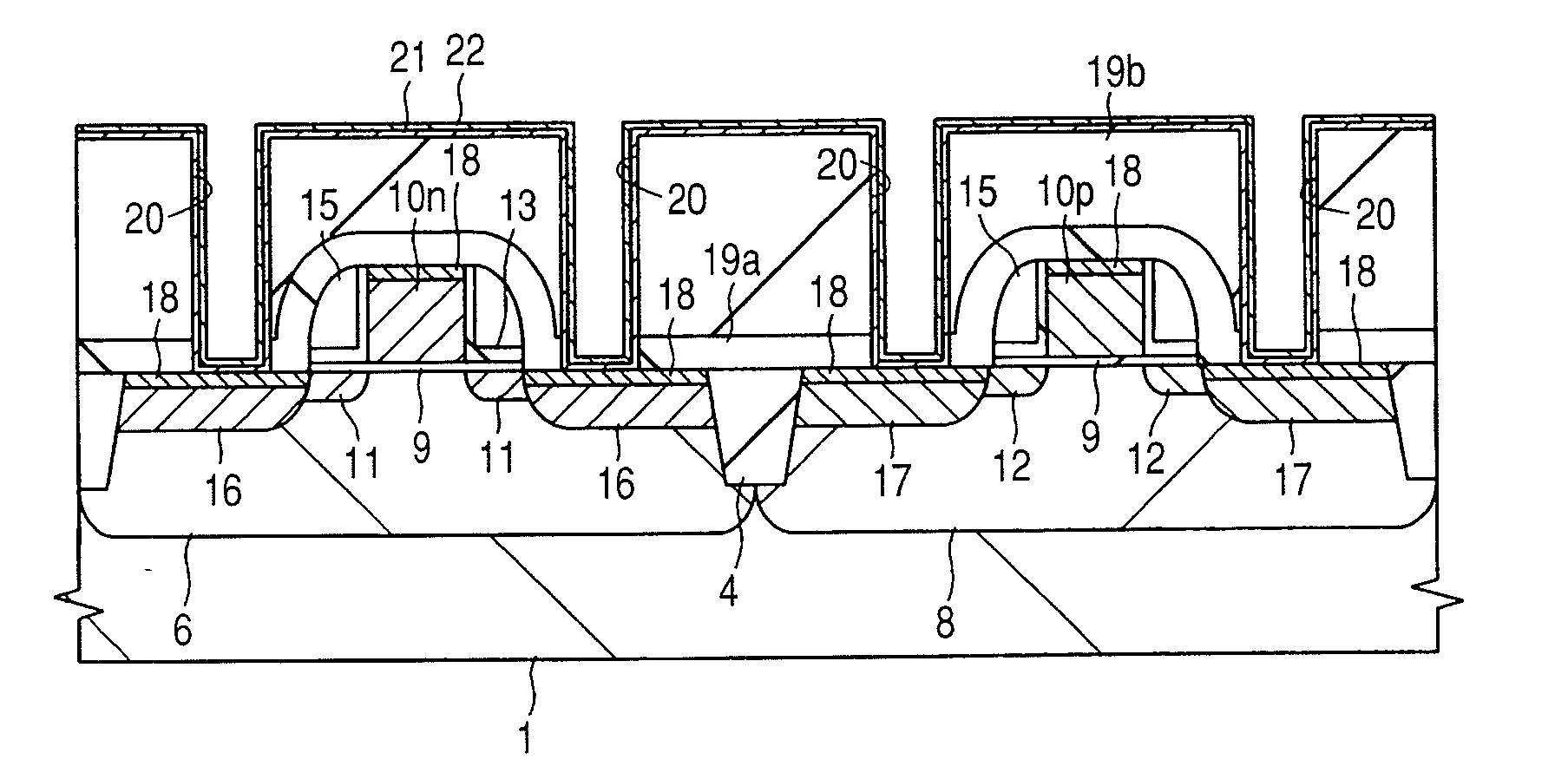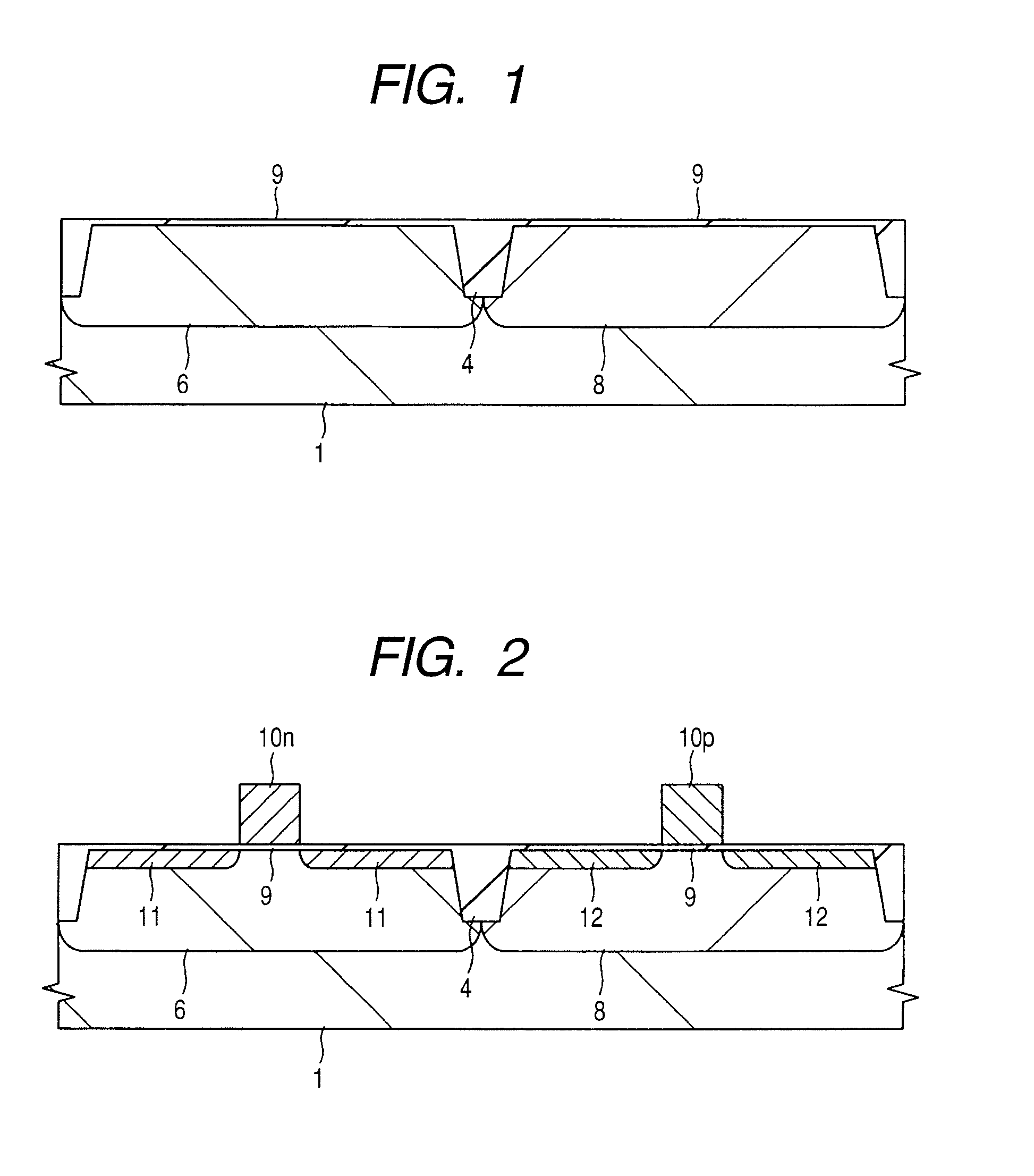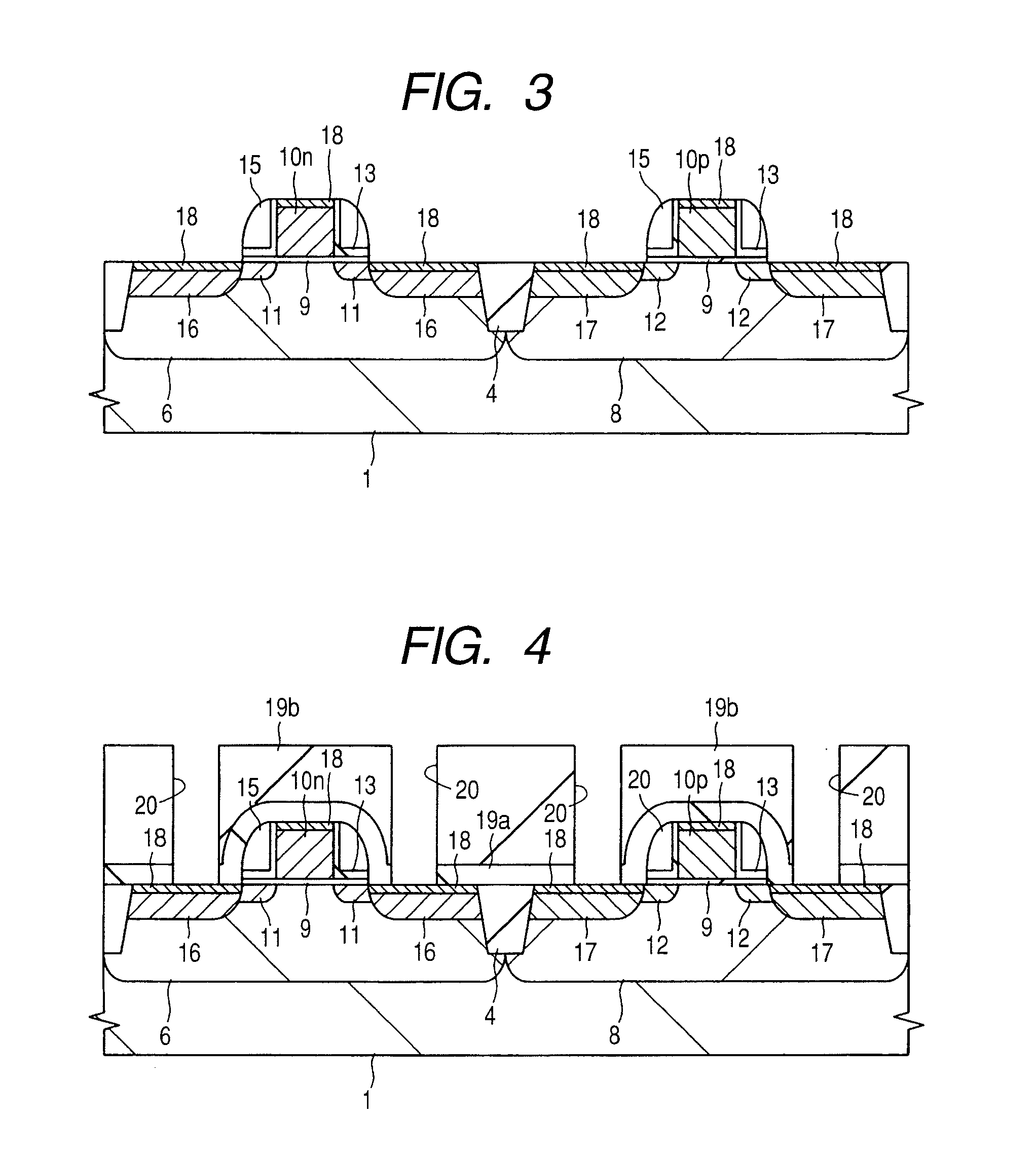Method of manufacturing semiconductor device
a manufacturing method and semiconductor technology, applied in the manufacturing of semiconductor/solid-state devices, basic electric elements, electric devices, etc., can solve the problems of not being able to completely sublime the product, peeling of the barrier metal film at the side surfaces of the connection holes, etc., to reduce the variations of electrical characteristics of the connection hole portion, the reliability and manufacturing yield of the semiconductor device can be improved, and the effect of reducing the variation of electrical characteristics
- Summary
- Abstract
- Description
- Claims
- Application Information
AI Technical Summary
Benefits of technology
Problems solved by technology
Method used
Image
Examples
first embodiment
[0051]A method of manufacturing a CMOS (Complementary Metal Oxide Semiconductor) device according to a first embodiment of the invention will be explained with reference to FIG. 1 to FIG. 14. FIG. 1 to FIG. 5A and FIG. 5B, and FIG. 11 to FIG. 14 show cross-sectional views of relevant parts of the CMOS device, FIG. 6 is a schematic plan view of a barrier-metal deposition system, FIG. 7 is a chart of deposition steps of the barrier-metal film, FIG. 8 is a schematic cross-sectional view of a chamber for dry cleaning treatment provided in the barrier metal deposition system, FIGS. 9A, 9B and 9C respectively show schematic cross-sectional views of the chamber for explaining processing steps of a semiconductor wafer in the chamber for dry cleaning treatment provided in the barrier-metal film deposition system, and FIG. 10 is a graph showing the relation between electric current flowing in a gate electrode and a semiconductor substrate, and the heat treatment temperature in the case that d...
second embodiment
[0099]As explained in the first embodiment, in the dry cleaning treatment performed in the process of forming the barrier metal film, the product remains at the principal surface and parts of the side surface and the rear surface of the semiconductor wafer SW. Consequently, the product having a composition of (NH4)2SiF6 is removed by heating the semiconductor wafer SW at a temperature of 100 to 150° C., using the showerhead 57c set to 180° C., which is provided in the chamber 57 for dry cleaning treatment, further, the product of a composition which is slightly different from (NH4)2SiF6 is removed by heating the semiconductor wafer SW at the temperature higher than 150° C. by the chambers 55, 56 for heating treatment.
[0100]In a second embodiment of the invention, the temperature of a showerhead 57CH provided in the chamber 57 for dry cleaning treatment is set to a temperature higher than 180° C., for example, at 250° C., and the semiconductor wafer SW is heated at a temperature at 1...
third embodiment
[0110]As described in the embodiment, in the dry cleaning treatment performed in the step of forming the barrier metal film, the semiconductor wafer SW is merely put over the wafer stage 57a in general, therefore, the product having the composition of (NH4)2SiF6 remains not only at the principal surface of the semiconductor wafer SW but also at parts of the side surface and the rear surface of the semiconductor wafer SW. The product remaining at parts of the side surface and the rear surface of the semiconductor wafer SW peels off when the semiconductor wafer SW is transferred to another chamber and other occasions, which causes dirt or dust. Consequently, in the first and second embodiments, heat treatment is performed to the semiconductor wafer SW in the same chamber 57, continued from the dry cleaning treatment, thereby removing the product remaining at the principal surface of the semiconductor wafer SW as well as the product remaining at parts of the side surface and the rear s...
PUM
 Login to View More
Login to View More Abstract
Description
Claims
Application Information
 Login to View More
Login to View More - R&D
- Intellectual Property
- Life Sciences
- Materials
- Tech Scout
- Unparalleled Data Quality
- Higher Quality Content
- 60% Fewer Hallucinations
Browse by: Latest US Patents, China's latest patents, Technical Efficacy Thesaurus, Application Domain, Technology Topic, Popular Technical Reports.
© 2025 PatSnap. All rights reserved.Legal|Privacy policy|Modern Slavery Act Transparency Statement|Sitemap|About US| Contact US: help@patsnap.com



